Recently, I received an e-mail from Nan B., asking for my thoughts on using herbs with a mystery infection after a relative’s skydiving accident. She has given me permission to relay the story and to give my reply here.
A Rough Beginning
Nan has a relative who got into a bad skydiving accident. I’m not privy to the details of the accident, but it apparently caused a fair amount of trauma to his arm. This was a few months ago.
Problem #1: Mystery Infection at a Surgical Site
He has since had surgery to fix the arm, but came out of it with a persistent infection at the wound site. Antibiotics haven’t done anything for it, and he is going back in to have a culture of the infection taken to try to determine what type of microbe is attacking him. The doctors and family are concerned that the infection could spread throughout his body or go into the bone. Nan contacted me to get my thoughts on the situation.
Problem #2: The Challenges of the Unknown
That’s a lot of scary stuff. There are a lot of unknowns. For one thing, I don’t know anything about this guy. I’ve never met him. We have none of the relationship you’d like to cultivate in a holistic medicine environment. In this situation, I have to tread especially lightly and be clear that this is more of a theoretical conversation than a typical, herbal consultation. Anything that I mention here is just me thinking out loud and something that I might try, if it were me.
Also, you should know that herbs and drugs can interact. I have no idea what pharmaceuticals are involved here, if any. Ideally, you would consult with someone who is trained in both pharmaceuticals and herbs. Of course, those are hard to come by. Books like The Essential Herb-Drug-Vitamin Interaction Guide are great resources to help educate yourself, but you should still talk to your doctor about herbal medicines you’re taking.
Another disturbing unknown is the mystery infection. In my opinion, the two areas where conventional, western medicine really shine are diagnostics and trauma care. If I had a skydiving accident and could choose to land in the yard of an EMT or a master herbalist, I’d choose the EMT. After I was patched up, then I’d want the herbs to facilitate my healing. Similarly, doctors are much better than herbalists at telling you which specific microbe is invading your body. So, yes, going to the doctor is the right move in this situation.
Nan’s Herbal Suggestions . . . And My Thoughts On Them
Nan also mentioned that she has recommended to him that he eat lots of raw garlic, drink echinacea and goldenseal tea, and eat hot peppers. She asks what I think of this.
Garlic
First, garlic is an excellent, broad-spectrum, antimicrobial herb.1)Ankri, Serge, and David Mirelman. “Antimicrobial Properties of Allicin from Garlic.” Microbes and Infection1, no. 2 (1999): 125-29. doi:10.1016/s1286-4579(99)80003-3. It can be used internally and topically. Garlic has a chemical in it called allicin. This chemical is one of the primary active antimicrobials in the garlic and is activated by contact with air. So to help bring out the garlic’s full potential, you can crush or finely chop the garlic and leave it exposed to air for just a couple of minutes. For medicinal uses, don’t cook the garlic. This damages the allicin.
The one downside I could envision in this scenario is that garlic can also lower blood pressure.2)Tejani, Aaron. “Garlic for the Prevention of Cardiovascular Morbidity and Mortality in Hypertensive Patients.” Journal of Evidence-Based Medicine5, no. 4 (2012): 243. doi:10.1111/jebm.12013. This could be an issue if he is still healing from past surgeries, has any upcoming surgeries, or has issues with low blood pressure.
Hot Peppers
On the other hand, hot peppers, such as cayenne, have a normalizing effect on blood pressure. It sounds counterintuitive, but hot peppers don’t just raise or lower blood pressure. They move blood it in whichever direction it needs to go. They do this by increasing your vaso-elasticity (the elastic nature of your veins). This allows veins with high pressure to stretch, thus lowering the pressure. Veins under low pressure can contract, increasing the pressure. Another good thing about hot peppers is that their capsaicin (the chemical that gives them their heat) is antimicrobial.3)Marini, Emanuela, Gloria Magi, Marina Mingoia, Armanda Pugnaloni, and Bruna Facinelli. “Antimicrobial and Anti-Virulence Activity of Capsaicin Against Erythromycin-Resistant, Cell-Invasive Group A Streptococci.” Frontiers in Microbiology6 (2015). doi:10.3389/fmicb.2015.01281.
Peppers can also be used topically to help reduce pain at the site of the infection, though there is a bit of a window of optimal effect you want to hit. Too little isn’t effective. Too much can cause an uncomfortable burning sensation. Purchasing capsaicin cream is a good way to make sure you get just the right amount.
Echinacea
Echinacea and goldenseal are both great herbs. Echinacea has antimicrobial properties against a number of agents, but it’s also an immune stimulant, helping the body to fight off invaders.4)Stanisavljević, Ivana, Saša Stojičević, Dragan Veličković, Vlada Veljković, and Miodrag Lazić. “Antioxidant and Antimicrobial Activities of Echinacea (Echinacea Purpurea L.) Extracts Obtained by Classical and Ultrasound Extraction.” Chinese Journal of Chemical Engineering17, no. 3 (2009): 478-83. doi:10.1016/s1004-9541(08)60234-7. I can’t think of many downsides for it. You usually have to take a bit more than you’d think you do. And it really helps to take a catalyst herb to make your body wake up and take notice. If you’re eating hot peppers, that should count.
Goldenseal
And goldenseal? Well, you know that they say. “If you have a problem, throw some goldenseal at it.” They don’t say that? Well, they should. Seriously though, goldenseal has some great antimicrobial properties, among other benefits.5) Cech, Nadja, Hiyas Junio, Laynez Ackermann, Jeffrey Kavanaugh, and Alexander Horswill. “Quorum Quenching and Antimicrobial Activity of Goldenseal (Hydrastis Canadensis) against Methicillin-Resistant Staphylococcus Aureus (MRSA).” Planta Medica78, no. 14 (2012): 1556-561. doi:10.1055/s-0032-1315042. Many say that it enhances the effects of other herbs. That may be a good thing or a bad thing, depending of what else you’re taking.
I do have two cautions about goldenseal. The first is for the person taking it. Goldenseal can have a blood sugar–lowering effect. Be careful with mixing this herb with drugs that do the same, or if your blood sugar is already low.
The second caution is for the plant. Goldenseal has been overharvested in the wild. If you choose to use goldenseal as an herbal medicine, be sure to buy from a company that follows sustainable harvesting practices. We want to be able to use goldenseal for years and years to come.
One substitute for goldenseal might be Oregon grape. Both of these plants contain berberine, one of goldenseal’s primary constituents.
Overall, these plants sound like good choices to me, based on what I know of this situation. But let’s see what other options we might explore.
Additional Herbs
Oregano
Oregano is a great choice for a mystery infection. Some antimicrobial herbs are like assassins. They have a select few targets on their hit list. Others are like members of a warring clan, battling an entire family of microbes. Oregano just loves killing.6)Fournomiti, Maria, Athanasios Kimbaris, Ioanna Mantzourani, Stavros Plessas, Irene Theodoridou, Virginia Papaemmanouil, Ioannis Kapsiotis, Maria Panopoulou, Elisavet Stavropoulou, Eugenia E. Bezirtzoglou, and Athanasios Alexopoulos. “Antimicrobial Activity of Essential Oils of Cultivated Oregano (Origanum Vulgare), Sage (Salvia Officinalis), and Thyme (Thymus Vulgaris) against Clinical Isolates OfEscherichia Coli,Klebsiella Oxytoca, AndKlebsiella Pneumoniae.” Microbial Ecology in Health & Disease26, no. 0 (2015). doi:10.3402/mehd.v26.23289.7)Eng, William & Norman, Robert. Development of an Oregano-based Ointment With Anti-microbial Activity Including Activity Against Methicillin-resistant Staphlococcus aureus. Journal of drugs in dermatology: JDD 9. (2010). I don’t know how else to say it. It’s a beast.
Every herbalist has his or her own go-to herbs. Oregano is one of mine.
It’s even shown promise against antibiotic-resistant superbugs.
By the way, that brings up a good point. Nan mentioned that the hospital’s antibiotics weren’t affecting the infection.
Antibiotic resistance is a big problem in hospitals, and it may become a big problem for everyone soon. But this is an area where herbal medicine dominates the playing field.
While a pharmaceutical antibiotic may have 1 or 2 active ingredients, a plant may have 20 or 30, or more. There are just too many active components for a bacterium to adapt to. As a result, bacterial resistance to herbal medicines is virtually unheard of.
I have to pause to tell you a little oregano story. I like to take oregano essential oil internally whenever I start to get sick. I put a couple of drops in a little gel capsule and swallow it with water. It’s quick and easy. I’ve got my system figured out now, but the first time I ever did it, I filled up the entire capsule with oil (probably around 10-12 drops). As it turns out, that was a bit excessive.
I could have told you the exact moment that the gel capsule dissolved in my stomach, because the fumes started crawling their way back up my esophagus. I could only imagine that this was what it would feel like to swallow gasoline. I’m not sure if the oregano killed my infection or if it died from fear. It was a rather intense experience that I do not recommend for others. To put it into perspective, it was something like sweeping off your front porch with a flamethrower . . . but I digress.
Oregano oil can be used topically, though it is fairly zingy. It’s probably best to mix it with coconut oil before applying it. Taking essential oils internally can be a controversial topic for some people. Do your own research to see if this is something you are comfortable with.
If Nan’s relative is amenable to the idea of taking oils internally, I’d recommend using gel capsules. And while I don’t want to push any particular oil brand on anyone, I will point out that, to my knowledge, the Young Living brand is the only oil company to have FDA approval for internal use. How far you trust the FDA is up to you.
Plantain and Calendula
I’ll wrap up with one last suggestion. A plantain and calendula poultice would be a good choice at the surgical site. Both plants have antimicrobial properties, and plantain is a great choice for drawing out infections and inflammation.
Read More: “Make and Using a Poultice … Even On Hard-To-Treat Areas!”
Those are my thoughts. Thank you, Nan, for being willing to share your question with us. I hope it’s helped. Maybe we’ll do a follow-up post once the doctors can identify the invader or after some of these suggestions have been put into practice, if you choose to go that route.
We’ve covered a lot today. Now, it’s your turn:
What are your go-to herbs? Are you concerned about the emergence of antibiotic-resistant superbugs? What do you think about the idea of taking essential oils internally? Would you ever go skydiving? Let me know in the comments.
_______________________________________________________
Psst! Our Lawyer Wants You to Read This Big, Bad Medical Disclaimer –> The contents of this article, made available via The Grow Network (TGN), are for informational purposes only and do not constitute medical advice; the content is not intended to be a substitute for professional medical advice, diagnosis, or treatment. Always seek the advice of a qualified health care provider with any questions you may have regarding a medical condition. If you think you may be suffering from any medical condition, you should seek immediate medical attention. You should never delay seeking medical advice, disregard medical advice, or discontinue medical treatment because of information provided by TGN. Reliance on any information provided by this article is solely at your own risk. And, of course, never eat a wild plant without first checking with a local expert.
_______________________________________________________

Scott Sexton is a TGN Trailblazer, a highly experimental gardener, an unrelenting weed-eater, and a largely non-profit herbalist (much to his wife’s chagrin). When Scott is not teaching foraging classes, testing out theories in the garden, or grazing in the forest, he can be found at his Facebook page, “A Forager’s Guide to the Zombie Apocalypse.”
References
| ↑1 | Ankri, Serge, and David Mirelman. “Antimicrobial Properties of Allicin from Garlic.” Microbes and Infection1, no. 2 (1999): 125-29. doi:10.1016/s1286-4579(99)80003-3. |
|---|---|
| ↑2 | Tejani, Aaron. “Garlic for the Prevention of Cardiovascular Morbidity and Mortality in Hypertensive Patients.” Journal of Evidence-Based Medicine5, no. 4 (2012): 243. doi:10.1111/jebm.12013. |
| ↑3 | Marini, Emanuela, Gloria Magi, Marina Mingoia, Armanda Pugnaloni, and Bruna Facinelli. “Antimicrobial and Anti-Virulence Activity of Capsaicin Against Erythromycin-Resistant, Cell-Invasive Group A Streptococci.” Frontiers in Microbiology6 (2015). doi:10.3389/fmicb.2015.01281. |
| ↑4 | Stanisavljević, Ivana, Saša Stojičević, Dragan Veličković, Vlada Veljković, and Miodrag Lazić. “Antioxidant and Antimicrobial Activities of Echinacea (Echinacea Purpurea L.) Extracts Obtained by Classical and Ultrasound Extraction.” Chinese Journal of Chemical Engineering17, no. 3 (2009): 478-83. doi:10.1016/s1004-9541(08)60234-7. |
| ↑5 | Cech, Nadja, Hiyas Junio, Laynez Ackermann, Jeffrey Kavanaugh, and Alexander Horswill. “Quorum Quenching and Antimicrobial Activity of Goldenseal (Hydrastis Canadensis) against Methicillin-Resistant Staphylococcus Aureus (MRSA).” Planta Medica78, no. 14 (2012): 1556-561. doi:10.1055/s-0032-1315042. |
| ↑6 | Fournomiti, Maria, Athanasios Kimbaris, Ioanna Mantzourani, Stavros Plessas, Irene Theodoridou, Virginia Papaemmanouil, Ioannis Kapsiotis, Maria Panopoulou, Elisavet Stavropoulou, Eugenia E. Bezirtzoglou, and Athanasios Alexopoulos. “Antimicrobial Activity of Essential Oils of Cultivated Oregano (Origanum Vulgare), Sage (Salvia Officinalis), and Thyme (Thymus Vulgaris) against Clinical Isolates OfEscherichia Coli,Klebsiella Oxytoca, AndKlebsiella Pneumoniae.” Microbial Ecology in Health & Disease26, no. 0 (2015). doi:10.3402/mehd.v26.23289. |
| ↑7 | Eng, William & Norman, Robert. Development of an Oregano-based Ointment With Anti-microbial Activity Including Activity Against Methicillin-resistant Staphlococcus aureus. Journal of drugs in dermatology: JDD 9. (2010). |
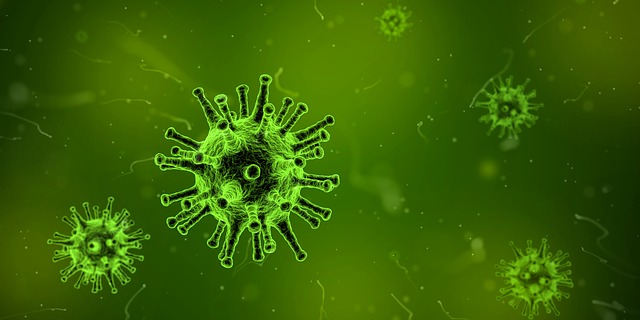
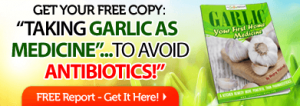
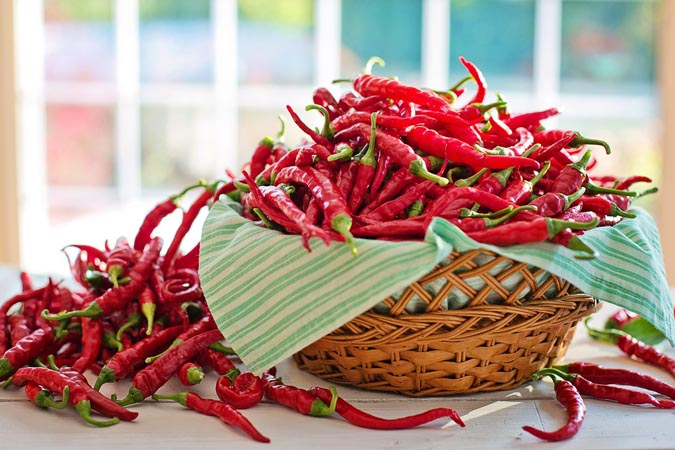
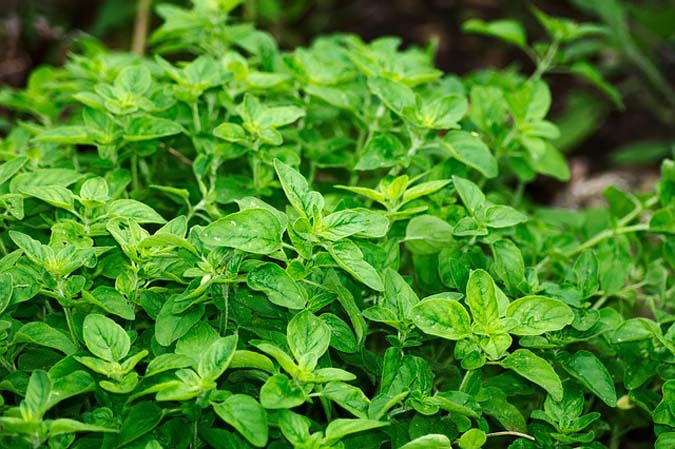

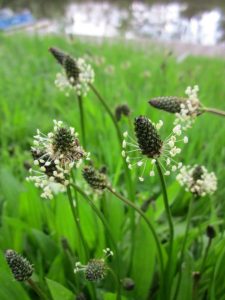








COMMENTS(12)
great article scott!!
Thanks, Heather. Glad you enjoyed it. Do you have a favorite go-to remedy for infections?
I love oregano. Anytime I feel a cold coming on I drink a strong infusion and feel the oregano killing off the bad guys almost immediately.
You’re speaking my language!
my goto for ears is garlic, calendula and mullein infused oilve oil. I suffered from ear infections my entire childhood (Im the one that got swimmers ear from taking showers) at 10 I had a hole in my eardrum and the ENT wouldn’t use any antibiotics anymore (most childhood ear infections are actually a drainage issue not necessarily an reoccurring infection issue) he told my mom to use garlic oil and hydrogen peroxide to clear my ears out (this was in 1983) i didn’t have another infection until 2006 when I used the same protocol again and the infection was gone in a day.
I’m a huge oregano oil fan! Been using it for the last thirty years! If using it topically, you most definitely need to dilute it (a friend put some straight on his foot fungus – man, he would’ve won the dance contest!) – I usually dilute with 1 part oregano oil to 12 parts other oil (usually olive) (and I buy the purest oregano oil I can get) for topical applications.
For the littles in the family, or seemingly “minor” bugs, I usually start whoever out with a colloidal silver solution: but if that doesn’t seem to do much within a fairly short time (hey, depends on what we’re dealing with), I will get out the “big guns” – the oregano oil.
We do take it by capsule – just like an antibiotic. Usually start out with a “loading dose” – 2, or in my husband’s case – 3 capsules then continue taking 3 to 4 times per day for (most of the time) at least a week to 10 days. Some tough bugs in the past – took the oregano oil for a month.
When you take the oregano internally, you do need to replenish your beneficial gut flora – because the oregano will kill off the good stuff as well as the bad. I’m also a big fan of kefirs, kombuchas, good probiotic yogurts (homemade- yum!) to help with that problem!
Anyway, between the colloidal silver and the oregano, my family (four generations now) has not used pharmaceutical antibiotics for the last 30 years, and have not had to deal with the repercussions from those agents. I’ll trust the herbs much sooner than the pharmaceuticals!
OH!!!! I almost forgot to mention – WHEN we take the oregano oil internally in capsules, we ALWAYS make sure to eat something FIRST – put something in the tummy – and eat something AFTER as well! Otherwise that tummy will really suffer, and will hate you for a very long time! Treat your tummy with respect – then it’ll help take care of you for your life!
Thank you for mentioning the need to followup with probiotics! That’s just so important, and I’m afraid it gets forgotten all too often. And I’m glad to hear that your family is having such a good experience with the oregano…all except for that foot issue. Ha! Good story!
That’s some sage advice about eating before/after taking oregano. It’s super effective, but it really doesn’t pull any punches (with you or the germs).
Great comments, CindaDunham! Thanks!
I fully agree that without many of the missing medical details, only generalized recommendations can be given. I personally would start with a plantain poultice for its drawing properties.
I would also not recommend using oregano oil undiluted topically, for anyone. I am not opposed to internal use of oils, but do not practice it personally. But never say never, LOL.
My ‘go to’ is local honey with organic lemon, ginger, a little bit of garlic and ACV. We use this orally whenever we feel any kind of ‘crud’ coming on.
Nice informative post. A drawing aspect wasn’t mentioned in my post. I could have added activated charcoal or other benign binders. Your oral is a great combo that will address multiple issues. It will seriously counter toxins, various pathogens, acidity, nausea and even help hydrate to remove wastes. The next time I fall out of a plane and break something, I’m coming to you. ☺
This is my hypothetical solution based on the limited facts and what I have on hand, however I would refrain from using the plurality of excellent herbs I have prior to obtaining more info and since I have many neutral products that can safety address said issues.
First and foremost, “I would work with the immune system.” That means (apo-) lactoferrin, which ALSO controls iron and thus all life. There is also Thymic Protein-A. Either, in high regular dosage, would probably be sufficient with a decent immune system, albeit I would use both. Additionally, and for others, the taking of ascorbic acid, liposomal vitamin-C and ascorbyl palmitate in high regular dosages will neutralize all toxins and likely eliminate the infection even by theirselves. Externally, the area should be sterilized with any appropriate solution, such as reduced 35% food-grade Hydrogen Peroxide. I would then apply Manuka active honey and cover it with fresh comfrey leaves (blocking 14) and apply a temporary bandage followed later with a very small amount of added allantoin and fresh comfrey leaves to accelerate healing and numb any pain.
Note:
> That if I only had herbs, I would use them according to what info I had and the meds given.
> That if the body is too acidic, then bicarbs are called for and will also neutralize the toxins.
> That there are many other appropriate solutions including benign herbals.
> That there is only need for antibiotics through ignorance (or follow the money).
Cinda has 30 years without and I have over 50 despite my medically impaired immune system.
> The hospital should obtain the protocol and administer IV ascorbic acid.
> If a bacterium is identified, there should be a search for a possible neutralizing (bacterio-)phage.
I am totally loving this thread of comments! Thanks to Scott and all for sharing your knowledge, experience, and wisdom with us!